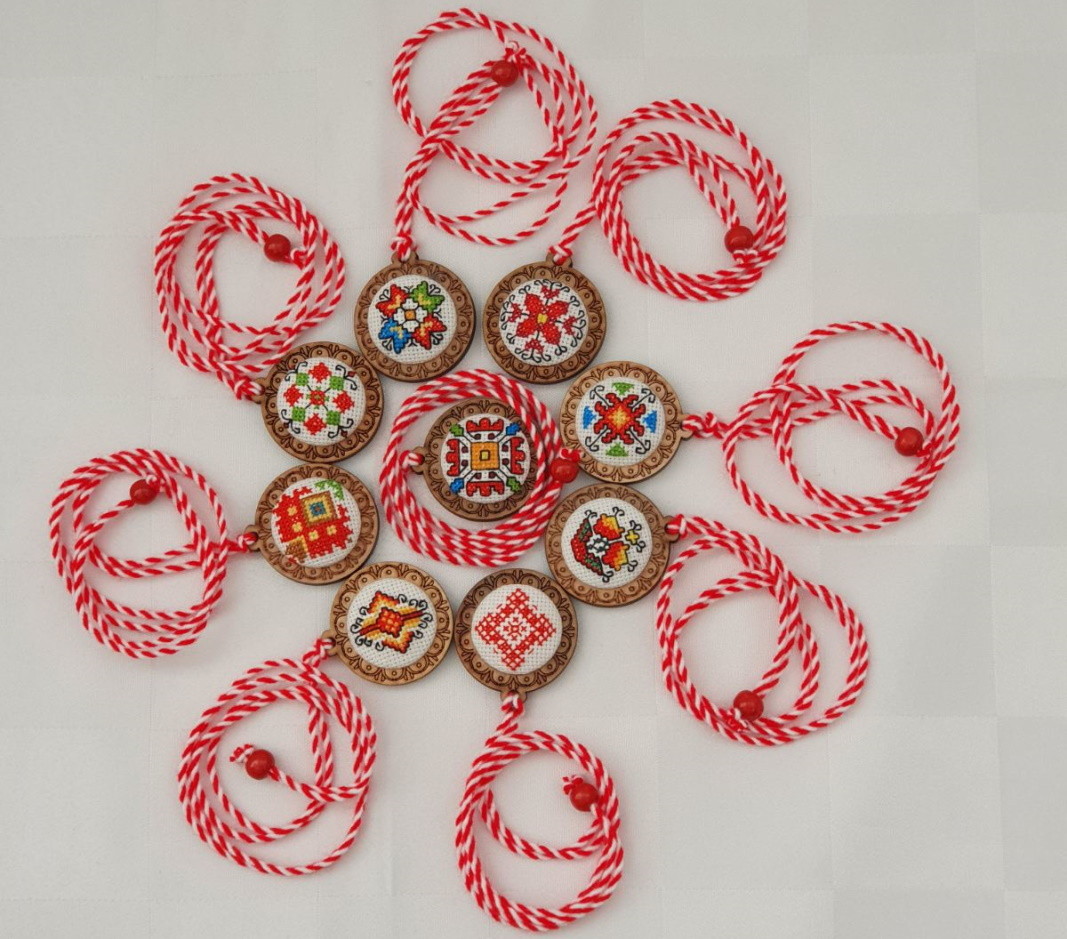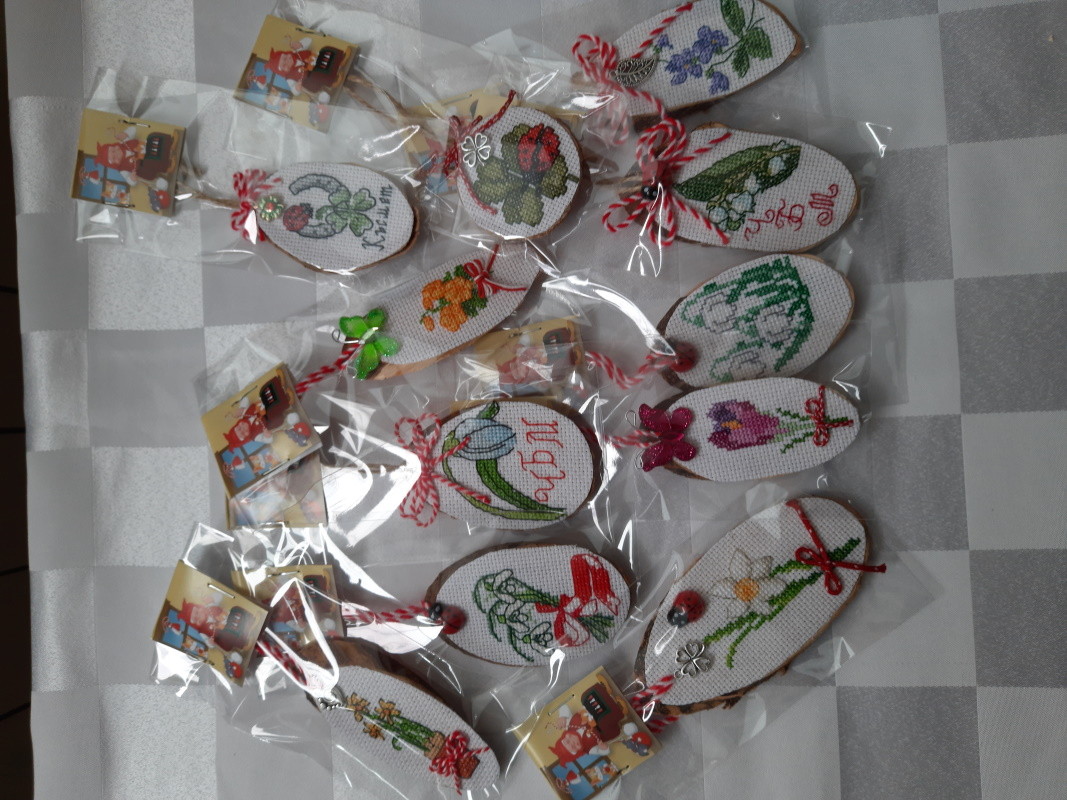
Today is the day on which, here in Bulgaria, we banish winter to make way for spring. And we do it with a symbol we pin onto our clothes – the martenitsa. The roots of the red-and-white health amulet go back to the distant past. The martenitsa is connected with the figure of Granny Marta – an old woman who comes on the first day of March to bring humans and domestic animals martenitsas. This ancient tradition is very much alive today, bringing joy to young and old. From the early hours on 1 March we start saying “Happy Granny Marta!” to one another, which can be interpreted as “Happy coming of spring, of a new beginning and hope!”
The simple red and white intertwined threads have been given all kinds of creative interpretations, though the symbolism has not changed. Genoveva Kalushkova from Sofia subscribes to the idea of adding more beauty and originality to the traditional martenitsas. With the same amount of patience and love she makes martenitas as well as the traditional Bulgarian embroidery, and when she combines the two the result is a veritable gem.

“People are very happy to see these martenitsas. They like them because we are Bulgarian and we keep the tradition. The patterns on the embroidery of my martenitsas are different, but most often it is the elbetitsa. It brings together the male with the feminine forces – the colours white and red are also such symbols. It was once thought that the colour red warded off magic spells. Green is also part of the embroidery – a symbol of eternal life, of nature, yellow is the symbol of the sun, of the fire and light we cannot do without. These are the principal colours of the embroidery. I use cotton thread, the kind used to make traditional Bulgarian clothing.”

Genoveva’s martenitsas are mostly made for friends, acquaintances and connoisseurs, because she embroiders them in her spare time.

“I put in a lot of feeling in each one, and that matters very much to the people these embroideries reach. The first thing I do on 1 March is to pin a martenitsa on my husband and son’s clothes, then I take martenitsas to work to give to my coworkers, something that brings happiness into our lives. I have sent martenitsas I have made to France, to Germany, Latvia, to lots of different places where there are Bulgarians living. And everywhere they go, these martenitsas bring joy as a souvenir with a personal message, a way not to forget Bulgaria.”
Bulgaria is increasingly becoming part of the general trend and dynamics of European citizens changing their location. There are no inhospitable European countries, rather it is a matter of policies and different interests of the..
The 10 main risks are facing the country in the coming decade, shows a national expert study entitled "Ten years, ten risks for Bulgaria" , BTA reports. "Deterioration of the education system" is the top risk cited by the poll. "Further..
You tell me what you have on your table so I can tell you what you are celebrating. This is a joking way of looking at the Bulgarian calendar of holidays from ancient times to the present day. The truth is that holiday meals have always been a very..
The 10 main risks are facing the country in the coming decade, shows a national expert study entitled "Ten years, ten risks for Bulgaria" , BTA reports...
Bulgaria is increasingly becoming part of the general trend and dynamics of European citizens changing their location. There are no..

+359 2 9336 661
